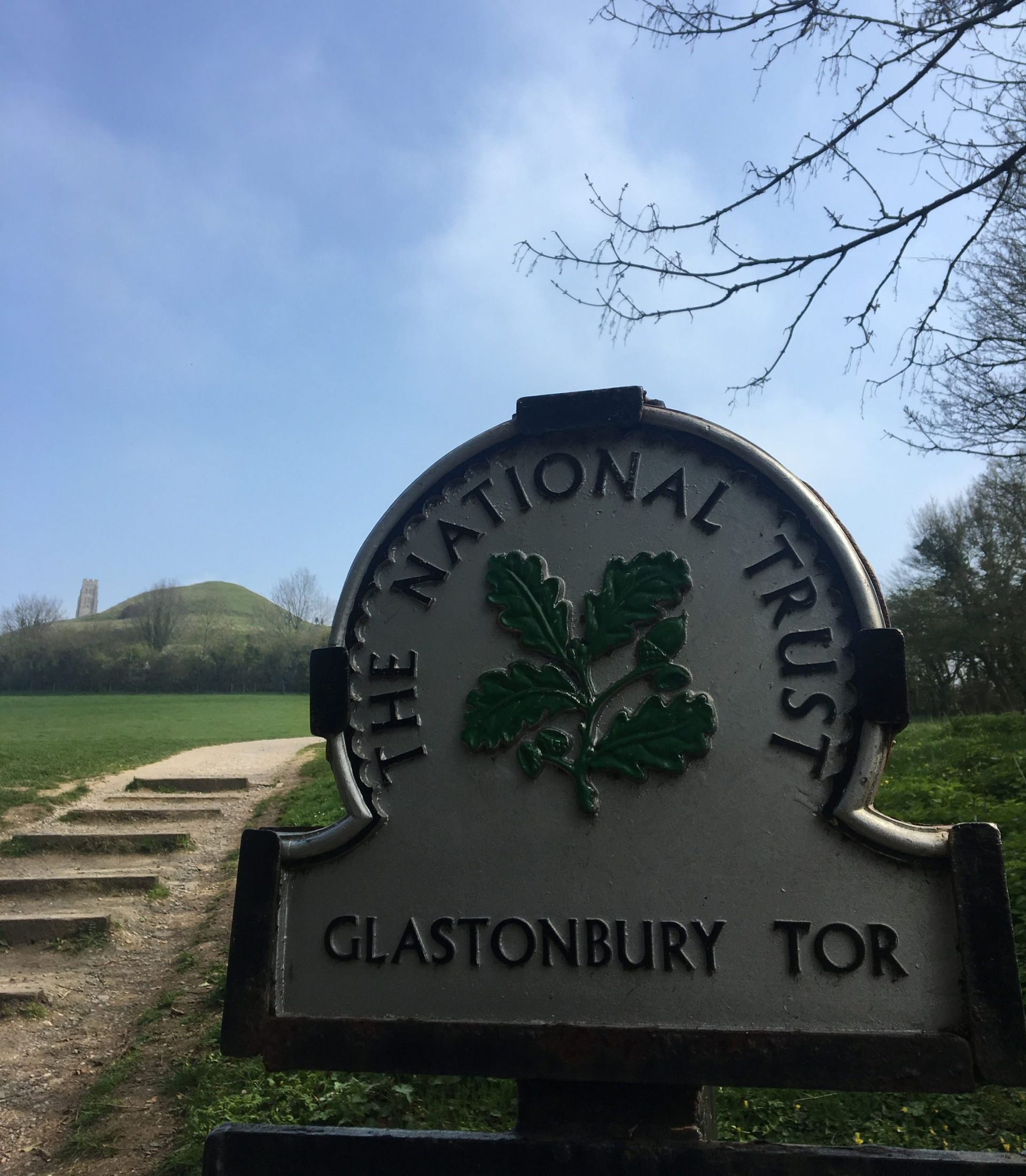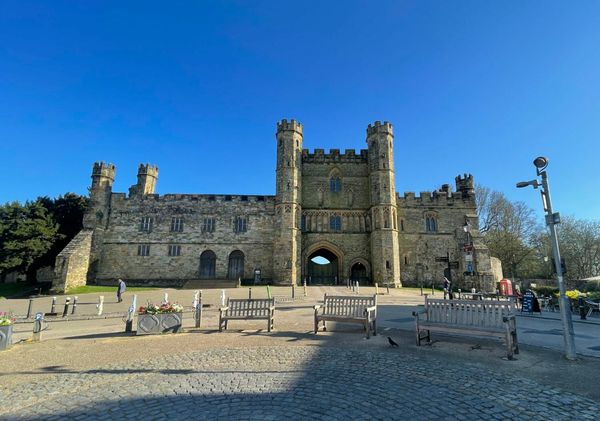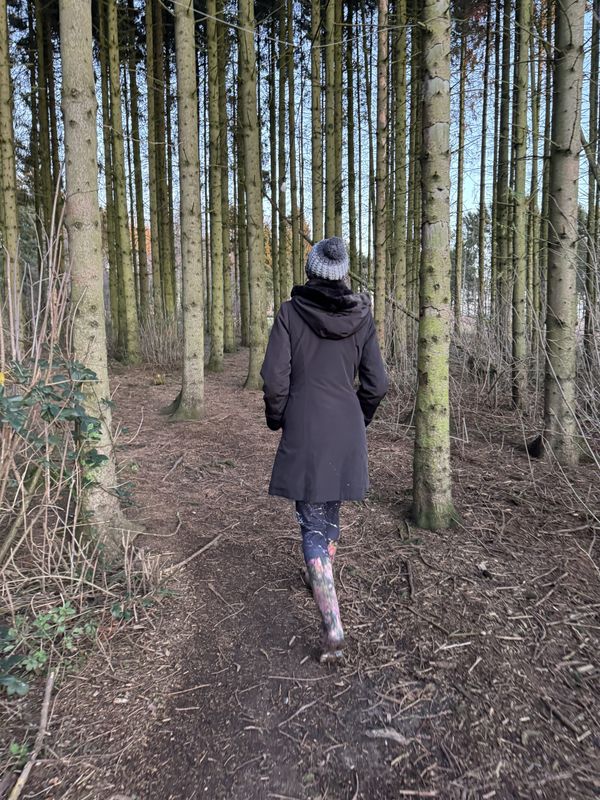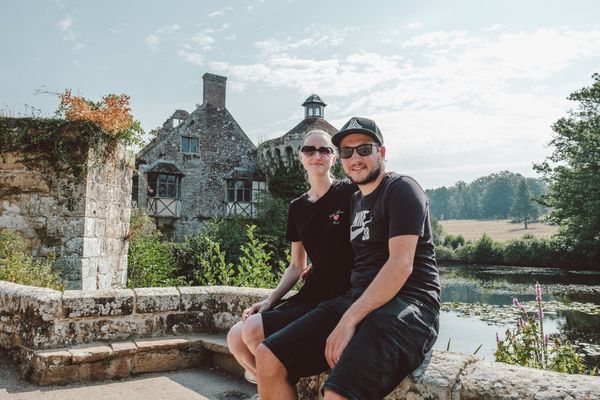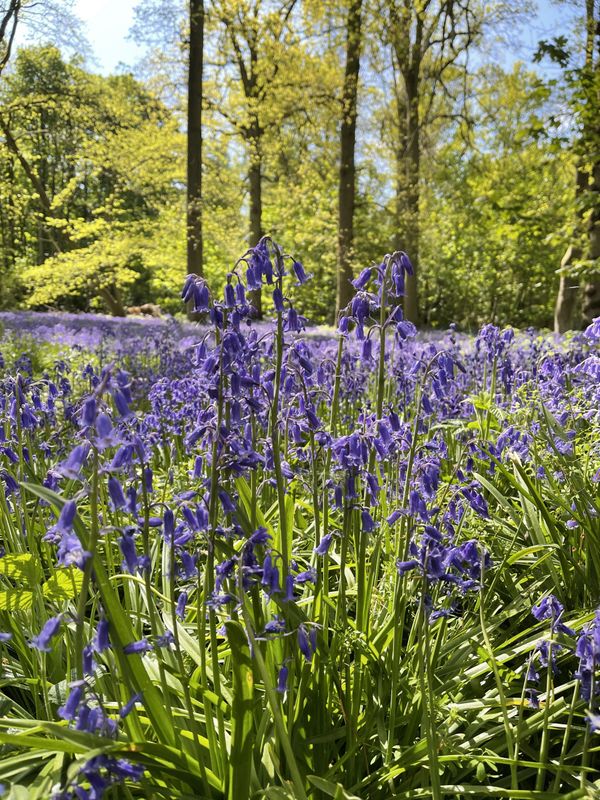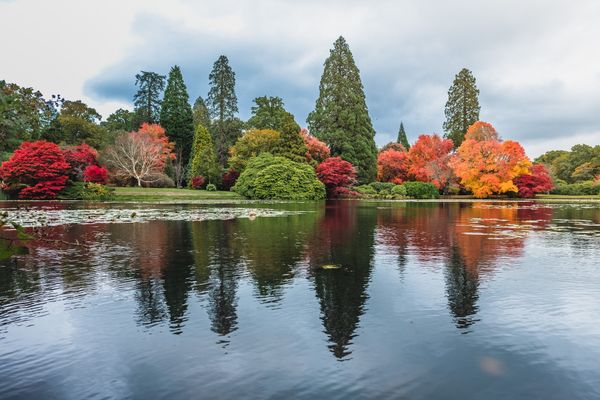In the Spring of 2019 we embarked on a road trip around the South West of England, through Gloucestershire, Wiltshire, Somerset, Devon and Cornwall. Mainly to break up back-to-back housesit responsibilities, but also to get away just for us and see parts of the UK that had eluded us while housesitting. We were lucky enough to have lifetime National Trust membership gifted to us for Christmas 2018, which we were eager to put to good use, and we set out to see as many of the sites and properties as we could! Planning for the trip took a LOT of admin work – we spent hours researching places to visit, the routes we’d take to get to them, where we’d stay along the way for a night or two, and in the end our shared spreadsheet became a thing of beauty and helped us stay organised on the road!
To help you guys navigate this blog post, we’ll include links to our Instagram posts that we made throughout our trip so you can see more photos of our experience at each place. We’ll also include links to the National Trust website pages for each place where you can check the locations, opening times, and cost of visiting each site (unless you’re a member like us, which means it’s free!) Some places on our list have an entrance fee to visit the site and/or property, while others are simply land owned and maintained by the National Trust which makes them free for anyone to visit. Without further ado, here’s our top five places we recommend you visit:
1 – Dyrham Park, Gloucestershire
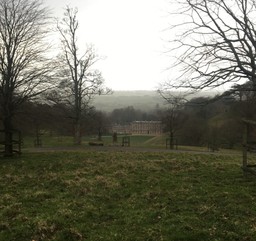
We actually visited the first place on our list a month before we began our trip!! Doing so much thinking about our South West adventure got us so hyped for visiting new places that we managed to squeeze this one in while housesitting in Malmesbury. Dyrham Park spans 274 acres of gorgeous grounds, with the house and gardens dating back to the 17th century. There’s a path from the car park to the house which takes around 15 minutes to walk, but we chose to attend the free, hour-long guided tour of the grounds right from the car park. We recommend timing your visit to arrive for one of these tours as you get such a wealth of information about the park from a very knowledgable guide! Any questions we had were answered with interesting added facts about the park, as we were guided on a wide, sweeping walk through the North half of the grounds. Here we managed to see some of the 185 fallow deer that roam freely, as well as spectacular views over Bristol and Bath. The tour then leads down to the main property where you’re welcome to explore the beautiful 300-year-old house or join another house-only tour there. The grounds are truly breathtaking and have such a rich history.
For two people who usually like to skip tours and go at our own pace, we were really surprised not only at how much we learned, but how interesting we found all the history! After a little more exploring in the house we decided to continue our walk and forgo the complementary shuttle bus back to the car park. A heads up – the walk back UP the hill definitely takes longer than 15 minutes, especially for those who’ve been walking all day, and when it’s just begun to rain!
2 – Stourhead, Wiltshire

Sprawling over 2,650 acres of beautiful gardens, at Stourhead you can discover a whole host of magical treasures, from classical-style temples and magical grottos to exotic foliage and the stunning Palladian house. You’ll need the best part of the day to explore absolutely everything – especially if you’re prone to taking hundreds of photos as the both of us are! We began our visit to Stourhead at the house, just a 7 minute walk from the car park, where we spent around an hour admiring dozens of paintings, decorative furnishings and sparkling chandeliers. From there we made our way down the gentle winding path to the lake, to begin a circular walk under the shade of cobbled archways and blooming trees with flowers in a kaleidoscope of Spring hues.
As if the picturesque views of the lake between gaps in the trees aren’t enough, there are so many quirky sights to see on this walk. The small, cobbled grotto tucked away in the tree line is the perfect excuse to slow your pace and enjoy its magical atmosphere. With only natural light from gaps in the stones illuminating the lead statues and accompanying poem inscribed into the marble floor, the grotto really takes you out of your surroundings for a moment. In striking contrast, the Pantheon stands proudly by the water’s edge at the farthest part of the lake, and it was here that we stopped to rest and admire the lake in full view from one side to the other. Heading back on the South side of the water, you’ll pass a traditional waterwheel before arriving at what was our last lakeside stop – the Temple of Apollo. While you can’t enter the Temple, its raised position provides a final stunning view over the gardens before a sloping descent back to Stourhead’s entrance. On the way out you can rest your legs at the restaurant, local pub or cafe, or browse the farm shop or National Trust gift shop for mementoes of your day. Unfortunately we were off season to visit the ice cream parlour (much to Suze’s dismay) but enjoyed a day full of wonder at Stourhead nonetheless!
3 – Glastonbury Tor, Somerset
Glastonbury Tor is situated in beautiful open land on the edge of the town of Glastonbury, and as such doesn’t require National Trust membership to visit even though the site is owned by them. The Tor is easy enough to walk to – only taking around half an hour to reach from the centre of town. We chose to park in the town centre to give us a chance to stroll along the high street and get a glimpse of day to day Glastonbury life, before beginning our walk to the Tor. Slowly the mural-covered corner shops and pubs fall away to narrow residential streets, and before long you’ll find yourself in open countryside. Glastonbury Tor is known for being a spiritual site and, though the walk is short, the trail has a really peaceful and calming vibe. We enjoyed the pleasant walk over the fields before arriving at the hill atop which the Tor sits. This hill rises 518 feet above the surrounding flat land, which caused us to take things slower for the ascent on the unusually hot March day that we visited. That being said the climb is very gradual, which we appreciated! Once at the top by the Tor itself, you’re instantly rewarded with 360 degree views over Somerset, Dorset, Wiltshire and Wales. We found ourselves joining the many other walkers who had chosen to simply sit on the ground and take it all in, appreciating the cool breeze and tranquil atmosphere for a while. The descent was a lot easier on that particular hazy and sticky day, and we rounded off our visit to Glastonbury with a peruse around a plethora of spiritual and hippie-themed shops on our way back through town. Be aware as there are no National Trust buildings on the site – reception, cafe, toilets etc. – we recommend going through the town first, if only to fill up a water bottle or buy a snack from a cafe there. (This is always a top priority when travelling with Snacky Suze)
Enjoying this post? Help support our blog by leaving a tip from as little as £1!
4 – Lydford Gorge, Devon
Our road trip took place in mid March which is the perfect time to visit Lydford Gorge. A secluded nature reserve with a few short walks and a circular trail, Lydford is the deepest Gorge in the South West. It is home to the stunning 92-feet-high White Lady waterfall which makes it a popular spot for visitors during summer months. Not only does that make March a good time to visit, but it’s also when all the walking routes re-open – for safety reasons the National Trust closes all trails from November to February apart from the short Waterfall trail. When we arrived on our mild mid-March morning we decided to take the 4.8km Gorge Circular walk to see it in its entirety, and only saw five other people along the way! You’ll need to wear sturdy walking shoes, as the spray from fast-flowing water at both ends of the trail means it’s slippery in places, but thankfully you are only permitted to walk in a clockwise direction which avoids having to edge past others on wet surfaces.
We began at the main entrance which is farthest from the White Lady Waterfall – though in busier times it might be advisable to begin at the waterfall entrance to appreciate it in all its glory before more people arrive! Don’t let this put you off as it is a beautiful and serene walk, with options in places to either take sets of wooden stairs or a gentler slope to descend the path to the waterfall. With only the sound of water and rustling leaves in the trees, it’s not only necessary to take it slow along the route but it makes for a much more mindful walk if you do. As you round back to the entrance, via cute footbridges and natural stone paths, be sure to visit the gushing water at The Devil’s Cauldron which is hidden away in a cave-like part of the rocks. It’s a bit of a squeeze along the small metal walkway here so be prepared to queue on busy days. Climbing back up the path, we rounded off our walk with a rest up at the Devil’s Cauldron tea room. We opted to sit at one of the picnic benches outside as it was such a lovely warm day, but really, it was because Chris followed someone with a dog. As usual.
5 – St. Michael’s Mount, Cornwall
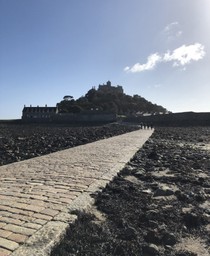
Cornwall is especially excellent for visiting National Trust sites as there are so many historic landmarks in the county – during our road trip we visited 9 NT places in Cornwall alone! We’ve definitely saved one of the best for last as St. Michael’s Mount is such an interesting place, steeped in history. Depending on the tide, the island is either accessed by boat or by taking a charming ten minute stroll along the causeway from Marazion beach. As we arrived at low tide, we enjoyed the walk along the cobbled path, admiring the Mount in the Spring sunshine as we approached. The island has a sweet and cosy, village-like atmosphere, as it is home to a community of around 30 islanders who live in the cottages and work to maintain the gardens and grounds at St. Michael’s Mount. We arrived just in time for a short tour of the island and we’re SO glad we did, as we learned a great deal about the Mount and the St Aubyn family who still reside in the castle today. Apparently the island was purposely left untouched by the Nazis during WW2, as the then Nazi Foreign Minister intended to live at the Mount after the planned German conquest. Because of this, as you walk the steep path from the base of the Mount to the castle, you’ll see architecture that dates back to the 12th century, and it is magnificent. The castle itself is like something straight out of a fairytale as it sits upon the highest point of the Mount. We took our time exploring the characterful rooms inside, as well as admiring the impressive views of the surrounding landscape from the turrets outside. Back at the bottom of the Mount there’s a sweet little shop full of local goods, as well as a café where you can buy the usual drinks, sandwiches or ice cream if the weather’s favourable! All National Trust properties and sites are beautiful in their own way, but for us St Michael’s Mount was next level magical. If you’re looking for a modern day fantasy land, this is it. It is truly one of the most whimsical places to visit in the U.K. that hasn’t yet been spoilt by people trying to capitalise on a good thing. So get there quick, and get there before the Summer crowds hit!
We hope you’ve enjoyed reading about these places, and hope we’ve inspired you to add some or all of them to your travel list! We had really great experiences at each one, so go and make your own wonderful memories there too! It’s worth noting that there is a free National Trust app which gives you an overview of every NT property, including facilities, opening times and photos, and it’s also a good way to check where is dog-friendly at each site. There’s also a map where you can add places to your favourites, or add places you’ve visited which we find is fun to look back on!
If you found this post helpful, please support our blog by donating as little as £1 to our running costs! Thank-you!

We are Chris+Suze
Latest Posts

National Trust
Being National Trust members gives us free access to some of the most beautiful parklands and properties across the UK! Investing in membership even just for a year is definitely worth it.
